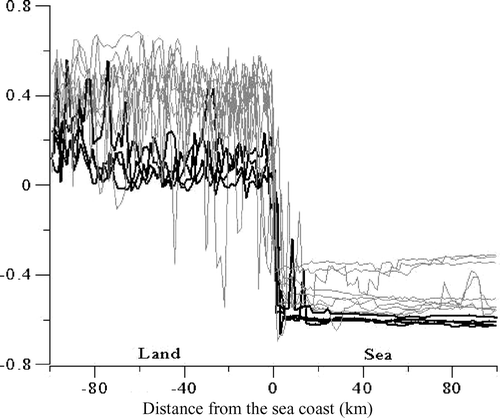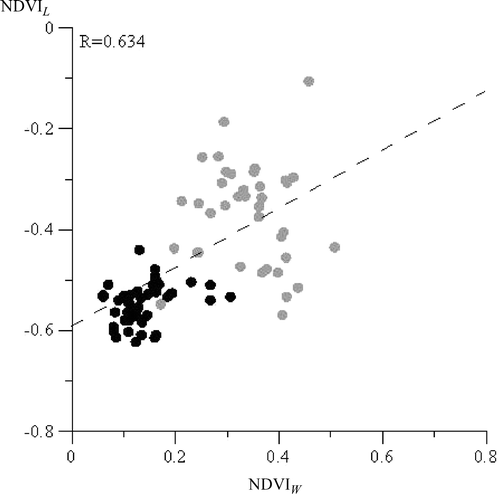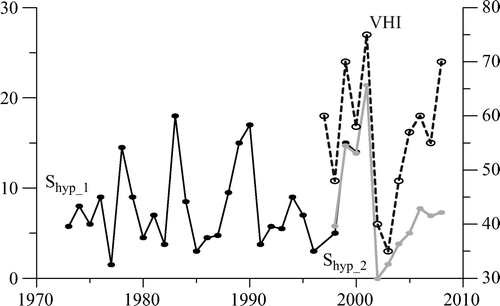Figures & data
Figure 1. Correlation between the colour index Iwn (443/555) and chlorophyll-a concentration in the northwestern Black Sea coastal zone (points and approximation line). R is the correlation coefficient.
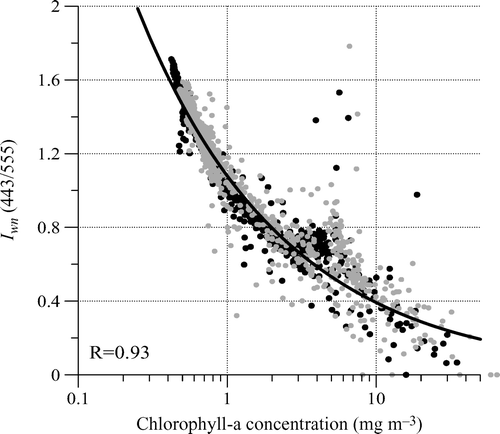
Figure 2. Correlation between NDVI W and (a) chlorophyll-a concentration, Chl = 2509.6(|NDVI W |−1/8574); (b) depth of the white disk visibility (transparency), Zd = 0.0011(|NDVI W |2.2741) and (c) concentration of suspended matter, Cv = 302198 (|NDVI W |−3.0741). Black dots represent Vegetation Health Index (VHI) based healthy vegetation on the land; red dots represent VHI-based vegetation stress; R is the correlation coefficient.
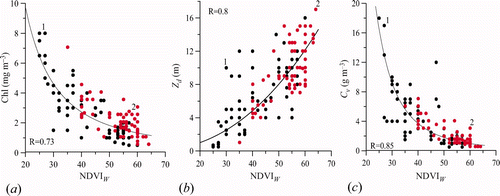
Figure 3. Advanced Very High Resolution Radiometer (AVHRR) based Vegetation Health Index (VHI) and chlorophyll-a concentration in the northwestern Black Sea for various VHI-based land conditions. In 2001 and 2003, VHI indicated stressed vegetation conditions (red/yellow colour) on the land and the average chlorophyll-a concentrations in the water were 2.51 and 1.61 mg m−3, respectively. In 1999 and 2000, VHI indicated healthy vegetation conditions (blue/green colour) on the land and the average chlorophyll-a concentrations in the water were 3.85 and 3.76 mg m−3, respectively. Available in colour online.
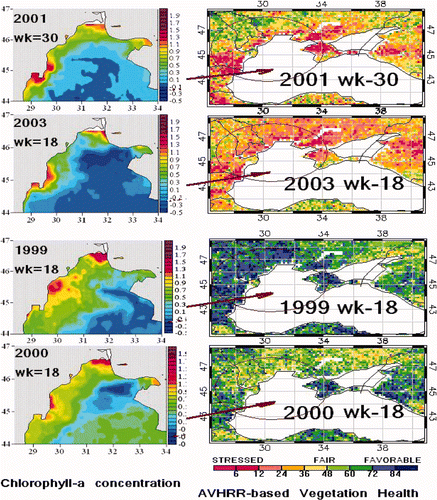
Figure 4. Relationship between average chlorophyll-a concentration in the 60–90 km marine zone of the northwestern Black Sea and land Vegetation Health Index (VHI) in the coastal zone during 1998–2008; VHI = 39.29 ln(Chl) + 12.731 is the approximation of this relationship, R is the correlation coefficient.
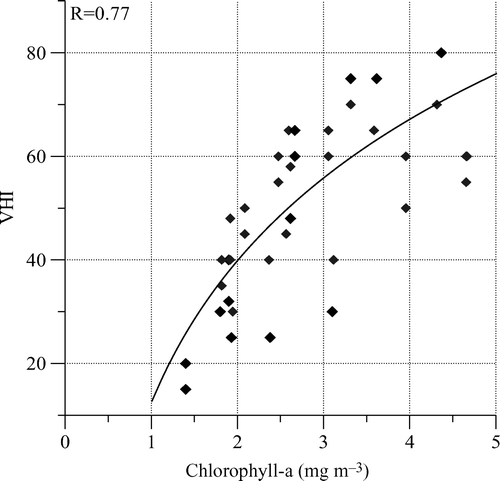
Figure 5. Annual variability of river Danube flow (QD), average chlorophyll-a concentration (Chl_1) in the entire northwestern Black Sea (44–47° N and 28.3–34° E), average chlorophyll-a concentration (Chl_2) in the 60–90 km coastal zone (44.7–46.5° N and 29.0–31.5° E) and Vegetation Health Index (VHI) for week 18 (mid-May) during 1997–2007.

Figure 6. Normalized Difference Vegetation Index (NDVI) dynamics over land and marine ecosystems in the near-coastal zone (the coast is at l = 0); black lines represent cases with vegetation stress and grey lines represent cases with healthy vegetation on the land coastal zone.
